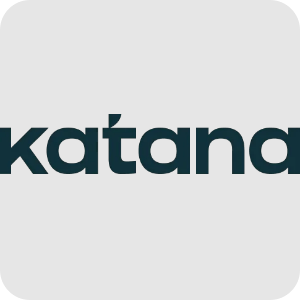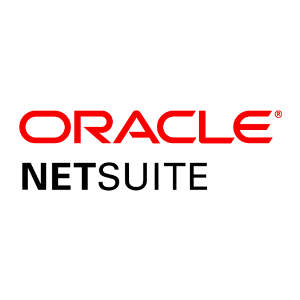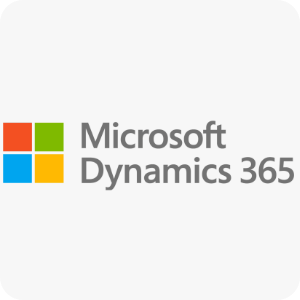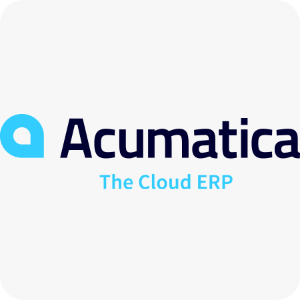
ERP Software: Simplify Complex Processes and Boost Productivity
In the realm of modern business operations, efficiency and integration are paramount. This is where Enterprise Resource Planning (ERP) software comes into play. ERP software is a comprehensive solution designed to streamline and optimize various aspects of a company’s operations, from finance and accounting to human resources, supply chain management, and beyond. ERP software empowers organizations to make informed decisions and adapt to changing market dynamics with agility by centralizing data, automating processes, and providing real-time insights. In this blog post, we’ll delve into the world of ERP software, exploring its functionalities, benefits, and crucial role in driving business success in today’s competitive landscape. Whether you’re a small startup or a multinational corporation, understanding the power of ERP software is essential for achieving operational excellence and sustainable growth.
Understanding Enterprise Resource Planning (ERP)
ERP software unifies, streamlines, and standardizes the company’s business procedures across all departments. An ERP system facilitates the work of the company’s finance, distribution, procurement, and other departments. With a successful ERP, a business can manage its processes more quickly and affordably.

ERP systems, which also define and allow data to flow between them, tie together many of these business processes. ERP systems reduce data duplication and provide data integrity with a “single source of information” by gathering an organization’s common quid pro quo information from different sources. Regardless of size or industry, ERP systems are crucial for managing thousands of businesses today. ERP software was primarily made for inventory management when it first entered the market.
What’s The Difference Between ERP And Financials?
The financial functions include modules for joint venture accounting, sub-ledger accounting, the accounting hub, payables and receivables, billing, grants, revenue management, expense management, project management, asset management, and collections. Financial functions are business operations related to an organization’s finance department.
Financial software must be able to generate periodic financial statements for governing regulators like the US Securities and Exchange Commission (SEC) and the European Securities and Markets Authority (ESMA). These regulators use reports like the quarterly 10-Q and annual 10-K. A tool called narrative reporting is used for these kinds of financial reports. In the end, the CFO is the person in charge of finances.
Enterprise resource planning (ERP) software may include features for managing orders, projects, logistics, product life cycles, enterprise performance management (EPM), human resources and human capital, supply chains, inventory, manufacturing, and maintenance.
ERP also integrates with front-office tools like customer relationship management (CRM) programmers to produce comprehensive customer views. Moreover, superb technologies such as the Internet of Things (IoT), blockchain, artificial intelligence (AI), machine learning, and digital assistants are widely integrated into advanced ERP software. Because ERP systems cover the entire enterprise, managing them frequently requires collaboration with the CFO, the CIO, the COO, and other important executive leaders.
The Fundamentals of ERP
The design of ERP systems is based on a single, predefined data structure (schema), which typically uses a single database. This simplifies ensuring that all company-wide information usage is standardized and built on shared user experiences and definitions. The workflows across business departments (such as finance, human resources, engineering, marketing, and operations) are then connected to the systems and the users of those systems using these fundamental constructs. ERP is, in a nutshell, a tool for integrating people, processes, and technologies throughout a contemporary enterprise.
Once this automotive company has implemented ERP, a component, such as “front brake pads,” is consistently found by part name, dimensions, resource, reference, lot number, contractor part number, serial number, cost, and specification, among numerous other explanatory and statistics items.
Every modern business depends on data, so ERP makes it simpler to gather, organize, analyze, and distribute this information to every person and system that requires it to fulfill their roles and responsibilities as effectively as possible.
ERP also ensures that these datasets and aspects add to the appropriate consideration in the company’s general ledger to monitor and symbolize all costs effectively. If front brake pads have always been referred to as “front brakes” in one software system (or perhaps a set of spreadsheets), “brake pads” in another, and “front pads” in a third, an automotive manufacturing company would have a difficult time determining how much money spent on front brake pads annually, whether it should switch suppliers, or negotiate lower prices.
4 Best ERP Software to consider for your business
Katana

It is all-in-one ERP software that helps and lets you put together all the information required for better business handling and management. From raw material stock to inventory management, everything can be maintained along with performance costs.
Pros of Katana
-It works for more than 15+ industry type
-As it is cloud-based software, it is easy to manage and get started with
Cons of Katana
-It does not have fixed pricing
Pricing of Katana
-As the pricing is not fixed, you can ask for the quotation according to your requirements, but you can take the 14-day free trial to check if the software suits you.
Oracle NetSuite

Oracle Netsuite is software that handles and manages the accounting and finance modules according to the size of your customer range. It is valid SaaS software that helps business organizations globally.
Pros of Oracle NetSuite
-It has a dynamic structure to operate the structure of the subsidiary
-Consists of multiple third-party integrations for accessing everything under one roof.
-Easy Data Management and sorting
-It takes care of the repetitive options and actions and streamlines them well.
Cons of Oracle NetSuite
-Navigation is difficult in the analytics and report feature
-Sometimes, it does not do justice with the merging employees and the client side
-Template creation becomes a bit difficult for users
Pricing of Oracle NetSuite:
It does not have the mentioned prices; it is customizable according to the requirements and needs.
Also read: Best BPM (Business Process Management) Software to Grow Your Business.
Microsoft Dynamics 365

It is the most used ERP software that helps manage marketing and sales action. It helps in streamlining everything in one for easy use. As a SaaS product, it has a larger dynamic software that helps handle the ERP solutions of the bigger and larger scale businesses.
Pros of Microsoft Dynamic 365
-It is highly flexible and easy to use regarding the payment process between vendors and business owners.
-HR module and feature of the Microsoft Dynamic is much simpler to manage
-It also supports AI programming for any automation actions
-Easily integrates with the other Microsoft software
Cons of Microsoft Dynamic 365
-It has limited data storage capacity
-It needs better and more flexible roles during the configuration
-Lacks in email campaigns management
Acumatica

It is considered to be simple cloud-based software that consists of applications like all-in-one dashboards, accurate reports and analytics tools, legal and informal document management, and more. It easily manages business solutions in the most accurate ways.
Pros of Acumatica
-It has sorted the finance department
-It has a rich UI and is very friendly to access for timers
-Consists of a comprehensive system
-Works and is a web-based software
Cons of Acumatica
-The reporting of the view and error
-We can customize it, but it becomes a bit pricey
-The cash management can be opted in better ways
-Email integration does not work, and it gets clunky sometimes.
Pricing of Acumatica
It has a free trial, and pricing can be quoted according to the customization and software needs.
What is the Business Value Of ERP?
There is no denying that ERP has a significant impact on modern business. As enterprise data and processes are gathered into ERP systems, businesses can align various departments and enhance workflows, resulting in significant bottom-line savings. Some specific benefits for businesses include:
Improved business insight from reports’ current data
You can lower operating costs by streamlining business processes and putting best practices into place.
Increased user data sharing in purchase orders, requisitions, and contracts
Infrastructure that is the same from the back office to the front office and is used for all business activities increases efficiency by providing a uniform user experience for many different business functions and clearly defined business processes.
Improved financial controls and data integrity to reduce risk
Using standardized and integrated systems can decrease costs associated with management and operations.
What are the Advantages Of Using an ERP cloud solution?
Businesses of all sizes, from large enterprises to small and medium-sized businesses, cannot immediately abandon their on-premises systems and move to the cloud. Or, at the very least, they lack confidence in their ability to do it within a limited development window. Sustaining an on-premises ERP while ignoring all the benefits of business resource planning as a cloud-based solution is no longer the best course of action. Why should you consider replacing or improving your on-premises system with cloud applications?
1. Quickly implement emerging SaaS technologies
Thanks to emerging technologies like artificial intelligence, cloud-based systems can quickly advance their capabilities compared to your legacy system (AI). ERP systems are becoming much easier to use and manage without requiring any new or extra input from the end user.
2. Make your current ERP system more effective
Cloud applications can be integrated and enhanced for critical tasks to improve and complete legacy software.
3. Apply current technology
You can take advantage of new technologies thackly evolving and shifting user paradigms by finding cloud applications compatible with your legacy ERP software modules. These provide complementary systems that immediately offer business capabilities and value without fundamentally changing your business processes.
4. Reduce the reliance on outside sources
A third-party vendor is typically required to produce operational business intelligence from legacy systems for reporting and analytics.
5. Improve your financial system.
Legacy systems were never intended to use modern reporting engines. In the last ten years, a fundamentally new mindset and understanding of what was possible and necessary for ERP platforms to succeed have been developed, leading to the development of cloud-based technology.
Conclusion
ERP is a comprehensive software solution that manages all organizational departments and boosts management efficiency. The top ERP programs are Oracle NetSuite ERP, Focus 9, Tally Prime, TCS ION, and MMI Expert-ERP. These programmers come with various standard features, including budgeting, HRMS, financial management, payroll management, order management, warehouse management, time tracking, cloud-based solutions, and straightforward integration with other ERP software.




